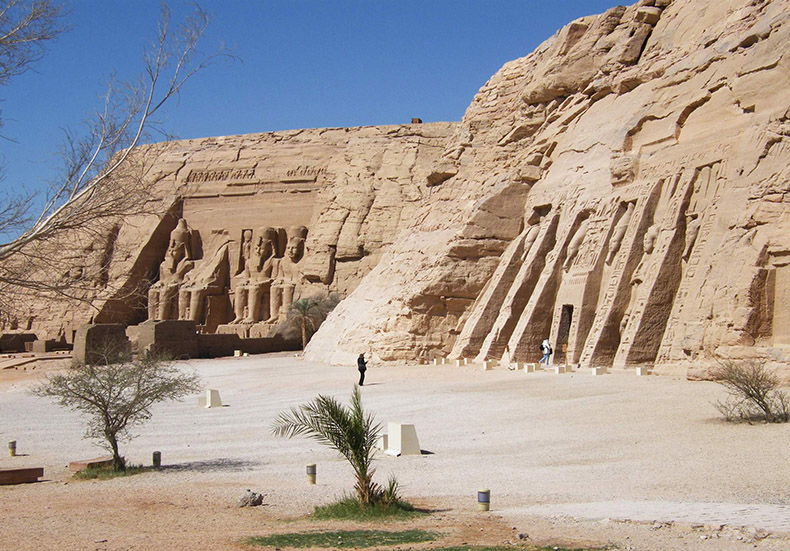
Temples of Ramesses II and Nefertari in Abu Simbel, Ancient Nubia; credit Entree to Black Paris
Ancient Nubia
Nubia is a land that begins at the level of the city of Aswan in southern Egypt and extends south to the area near the Sudanese city of Debba. It was known as the land of Kush in ancient times. It lies along the Nile between the First Cataract and the area between the Fourth and Fifth Cataracts. Its people are a mix of African, Asian, and European ancestry, and its culture is unique to eastern Africa.
Nubia is probably best known because of its relations – both friendly and hostile – with Ancient Egypt. Since its terrain lay between sub-Saharan Africa to the south, and Egypt and the Mediterranean Sea to the north, the Nile River was an important trade route for the indigenous resources of the region (gold, copper, semi-precious stones), as well as luxury goods such as ebony, ivory, and exotic animals from the rest of the continent.
The Nile also served as a route for the slave trade in eastern Africa.
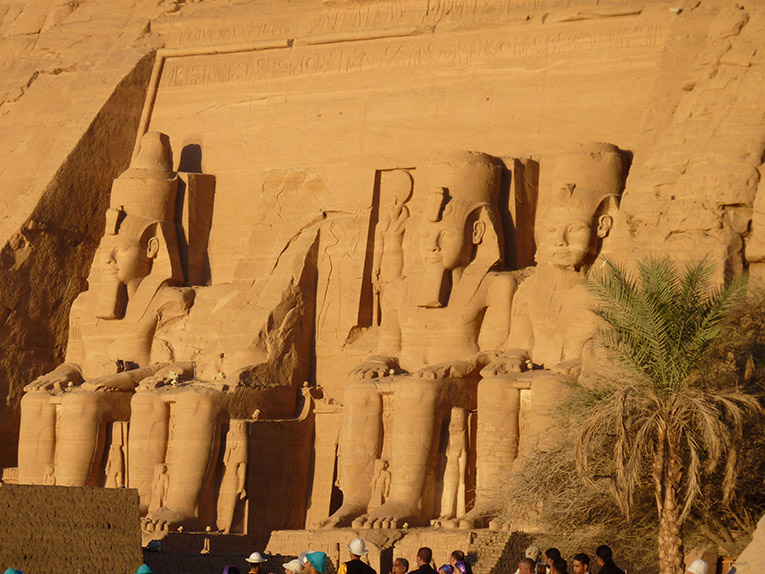
Nubian dancers Sunrisefest each February 22nd, Abu Simbel; credit Entree to Black Paris
Ancient Egyptians called Nubia Ta-sety, the land of the bow (a reference to the prowess with which Nubians wielded the bow and arrow), or Kush. The name “Nubia” was bestowed upon the region by the Romans. In ancient times, Nubia extended past the Sixth Cataract to the location of the modern city of Khartoum and beyond. Powerful, ancient Nubian civilizations developed at Napata and Meroë during the first millennium BC in what is now Sudan.
Travelers to southern Egypt see great remnants of Ancient Nubia. The Nubian Museum in Aswan houses a stunning collection of artifacts salvaged during the Aswan High Dam project (also known as the Lake Nasser project). But the most vivid experience comes from visiting the ruins of the many temples that were saved from inundation by the rising waters of the dam.
Although the lake permanently flooded Lower Nubia, UNESCO was able to move sixteen temples to higher ground, thus preserving them as heritage sites. The operation took twenty years. These sites may be visited by land, but a charming and perhaps more relaxing way to visit is by water, sailing on one of four cruise ships that ply the man-made lake.
Several temples, the remains of a Roman fortress, and a tomb comprise the itinerary for a visit to Egyptian Nubia. Four important sites are discussed below.
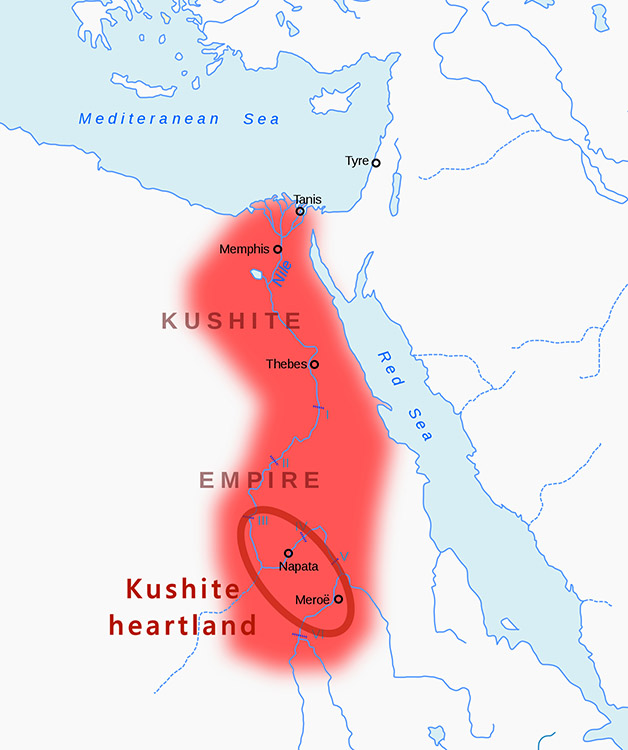
Kushite Empire around 700 BC; source Wiki
Kalabsha and Beit El Wali
Kalabsha is an impressive temple whose construction was begun by the Egyptian pharaoh Amenhotep II. Dedicated to the god Mandolis (Nubia’s version of the Egyptian god Horus), it is the site closest to the city of Aswan. It was built in the Ptolemaic style during the age of Augustus and is the largest free-standing temple in Nubia.
Several aspects of the temple indicate its Greco-Roman origins: the bas-relief style of carving; a smaller register for carvings and hieroglyphs compared to the huge carvings favored by the Egyptians. Carvings extend from ceiling to floor. Egyptians left several feet at the bottom of their walls untouched. Empty cartouches or cartouches containing hieroglyphs that were pronounced “per aä”, which was corrupted to the word “pharaoh.”
On the front wall of the hypostyle hall, there is a section that bears the Meroitic script. Attributed to a 4th to a 5th-century king named Karamadoye, the text has yet to be completely deciphered. Archaeologists are still looking for a definitive Meroë “Rosetta Stone” that would permit them to fully comprehend this Nubian language.
There is also an inscription in the temple that recounts the victory of the Nubian king Silko (600 CE) over an ancient tribe called the Blemmyes.
A smaller temple that was part of the structure of the original Kalabsha temple was created during the reign of King Arqamani of Meroë (who would also collaborate with Ptolemy IV on the construction of the salvaged temple at Dakka). Ptolemy IX and Augustus Caesar added to the temple and then Augustus had it demolished so that the new temple could be built.
Visitors will find the hemispeos of Beit El Wali on the same island as Kalabsha. The entrance to this temple overlooks a fishing port and a monument to Egyptian-USSR friendship across the lake. Scenes on the left wall of the external part of the temple show Ramses II, builder of the temple, in battle with the Nubians.
These scenes, as well as scenes of the Nubians paying tribute to Ramses, are replicated on the left wall of the entryway at Ramses’ greatest temple, Abu Simbel, which is discussed below.
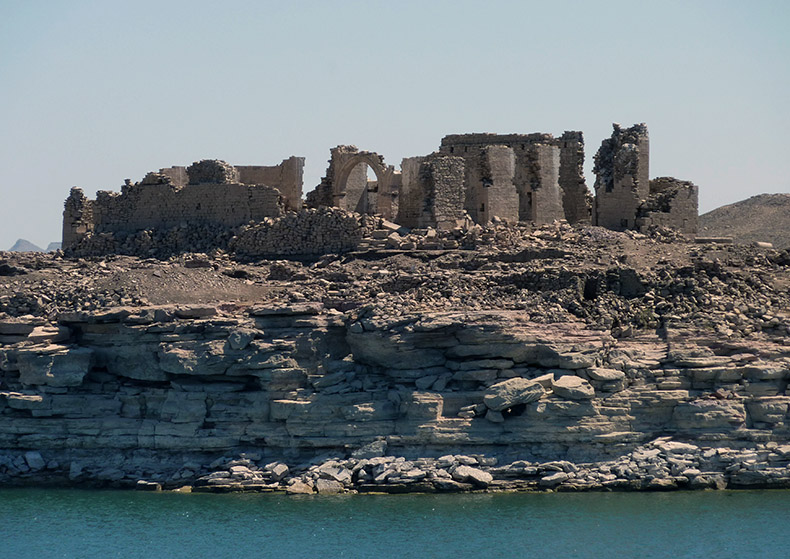
The ancient Qasr Ibrim arches and fortified wall; credit Entree to Black Paris
Qasr Ibrim
Qasr Ibrim was once a Roman fortress. It is the only vestige of Egyptian Nubia’s past that rests in its original position – on a cliff above the Nile. Located between the First Cataract and the Second Cataract (now underwater), it was witness to Nubian victories over the Egyptians. A huge cache of artifacts has been found there, including pottery, textiles, and documents written in Old Nubian.
Now surrounded by water, it can only be viewed from the deck of a ship. Access to the site is closed to the public to allow excavations by the Egyptian Exploration Society to continue undisturbed.
The ruins of a Christian cathedral stand on this rock, which is 70 meters above the level of the lake. The stones from a temple built by the pharaoh Taharqa in the 7th century BC. were used to construct this house of worship.
Taharqa was the greatest of the Nubian monarchs, the “Black Pharaohs” of Egypt’s 25th Dynasty, who ruled over Egypt for 70+ years. A warrior and a builder, Taharqa sought to restore Egypt to its former glory during his reign (690–664 BC). He was defeated in battle by the Assyrians in 664 BC and forced to retreat to Nubia.
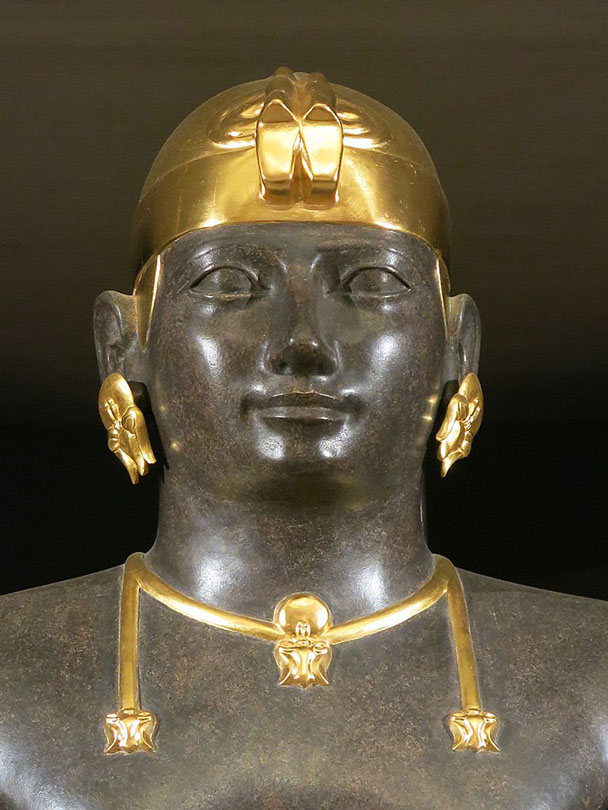
Pharaoh Taharqa statue, relocaated to the Louvre Museum in Paris; source Wiki
Centuries after Taharqa, the Meroitic queen Kandake (Candice) sent her military forces north from Upper Nubia to conquer Aswan, Philae, and Elephantine in Upper Egypt during Rome’s occupation of Egypt. Though Roman General Petronicus retaliated and was able to push deep into the Nubian territory and sack the city of Napata, the Meroitic kingdom negotiated the Romans’ withdrawal and retained Qasr Ibrim and lands as far north as Maharraqa for Nubia.
The Nubians ruled over this territory in relative peace for the next 250 years.
Abu Simbel
Many temples throughout Egypt depict Nubians as captives in carvings and inscriptions on temple walls. At Abu Simbel, Ramses II (Ramses the Great, a pharaoh in the 19th Dynasty) wanted any Nubians sailing north on the Nile River to carefully consider their fate prior to crossing into Egypt. He, therefore, created four huge statues of himself. Each statue was 20 meters (65½ feet) high facing the Nile, as a method of intimidation.
If the Nubians dared to come ashore to investigate the temple, they would be greeted with a long wall of carvings that demonstrated the military might of the pharaoh against the Nubian people. As they approached the entrance to the temple, they would see representations of the tribute that Ramses forced the Nubians to pay him. This consisted of sacks of gold, gold rings, elephant tusks, animal skins, ostrich eggs and ostriches, antelopes, giraffes, and other animals.
In building Abu Simbel, one of Ramses’ goals was to show his enemies that he was an invincible force on the battlefield. The most important battle that he depicts here is his victory over the Hittites in Kadesh, in what is now Syria. But many other conquests are also recorded on the temple’s walls.
Ramses’ other purpose in building Abu Simbel was to glorify himself, not only as a pharaoh but also as a god. There are myriad depictions of the pharaoh worshiping himself within the temple, as well as one on its façade.
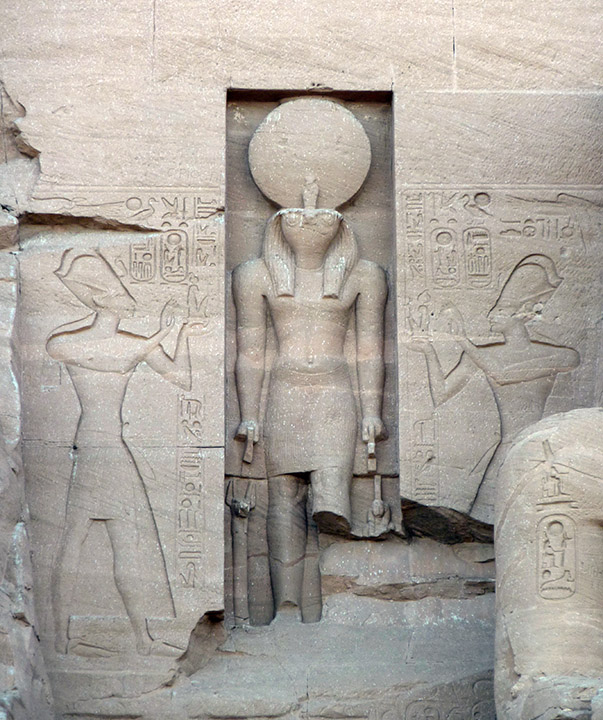
Ramesses II worshipping himself, Abu Simbel; credit Entree to Black Paris
Ramses created a second temple nearby to honor his most beloved wife, Nefertari (not to be confused with Nefertiti, wife of the 18th Dynasty Pharaoh Ahkenaten). Nefertari’s temple is exactly half the size of Ramses’ temple, yet the statues of Nefertari that grace the façade match the size of those of Ramses.
Queens were generally represented as being smaller than pharaohs in Ancient Egyptian art, so the equal size of these sculptures may be an additional indication of Ramses’ love and devotion for his wife. The temple’s walls are covered with scenes of Nefertari with various goddesses. Ramses even included a scene in which Nefertari is crowned by the goddesses Isis and Hathor.
The temples at Abu Simbel are the most magnificent example of the rescued temples of the Lake Nasser project. A number of archaeological treasures in Sudanese Nubia are now threatened by the dam that the Sudan government has built, but archaeologists and other scholars are working to save as much as they can.
Unfortunately, the rescue effort that has been mounted in Sudan is not of the same scale as that which Sudan and Egypt jointly called for when the Aswan High Dam was built fifty years ago, and much of the area that comprised Ancient Upper Nubia has already been submerged in water.
